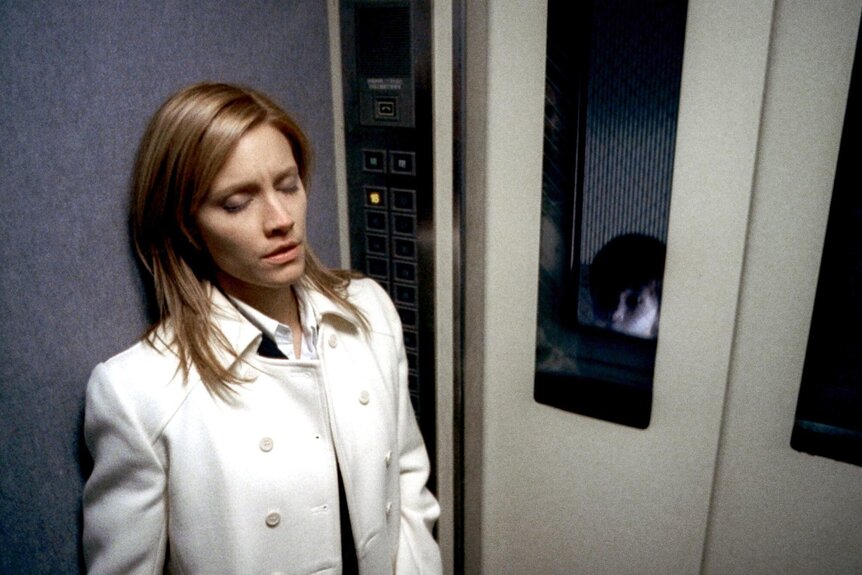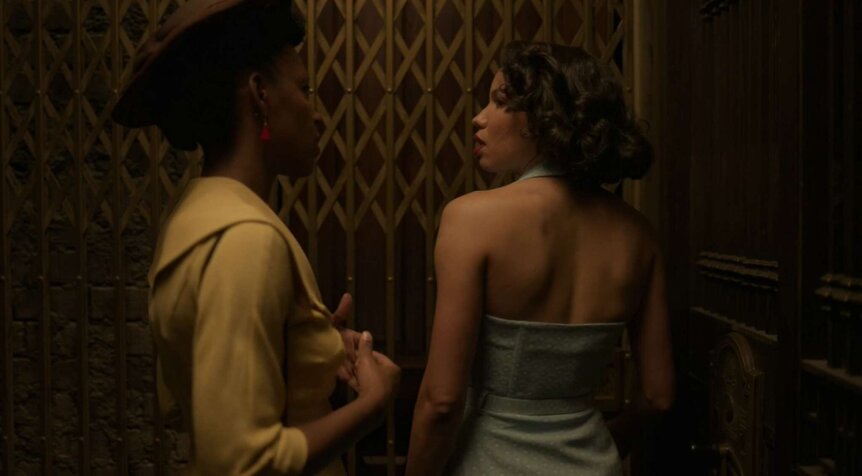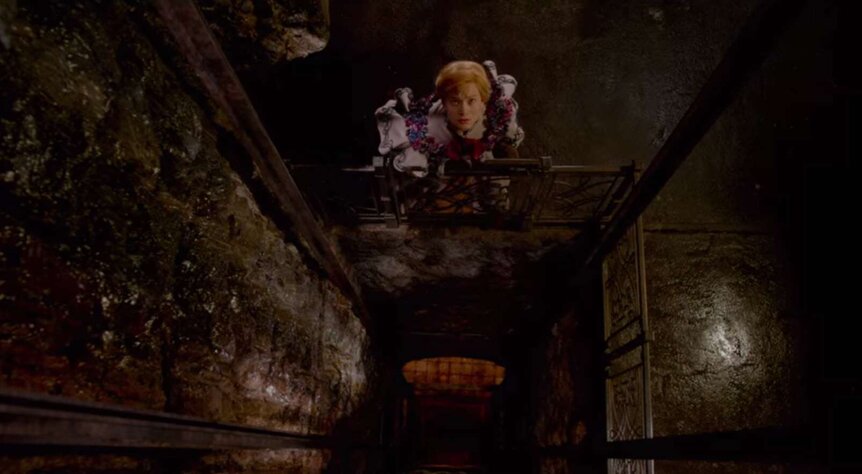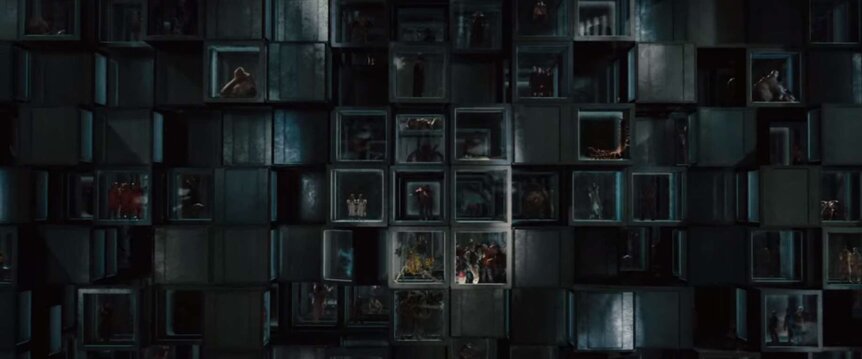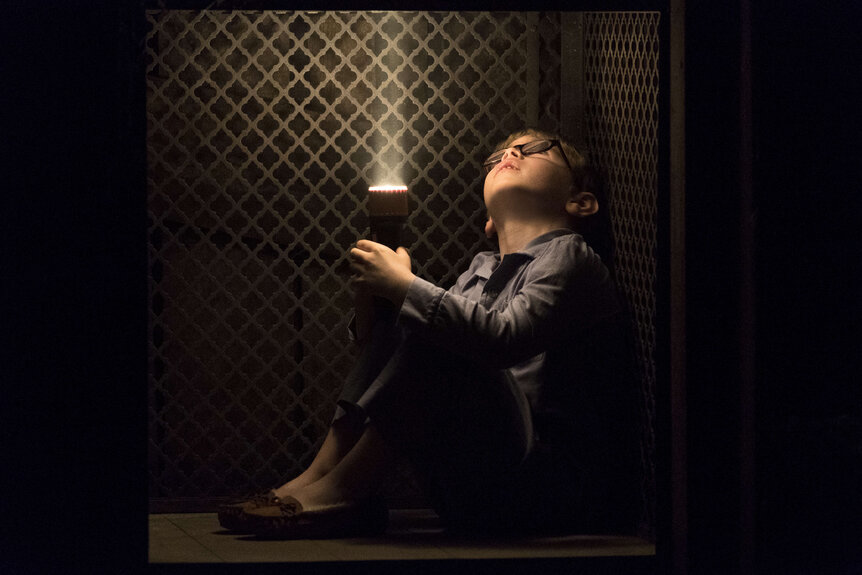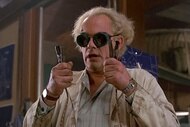Create a free profile to get unlimited access to exclusive videos, sweepstakes, and more!
Scares in an elevator: How horror utilizes this space
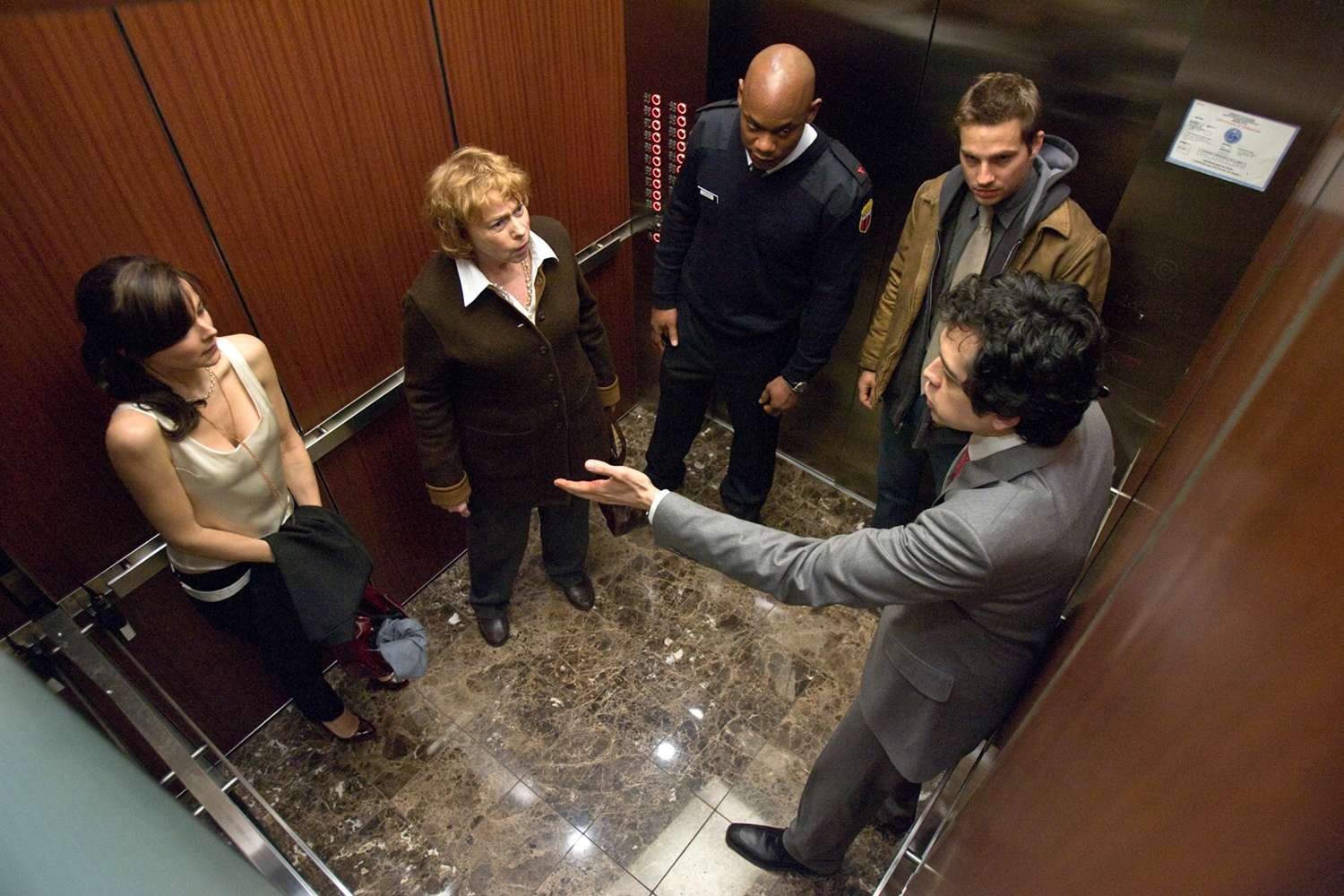
What goes up must come down, or so say the laws of physics. An elevator might seem rather innocuous, but the combination of a tight space with heights can turn this into a terrifying location. Getting trapped in a contraption that is held up by a few cables or standing in this box with a potential predator are just some of the nightmare situations employed to deliver a scary or tense sequence. The most frightening moments are often derived from the mundane, and riding an elevator falls into this bracket. Furthermore, descending to a subterranean level leans into a hellscape metaphor that is ideal for horror whether in the home or workplace. From the recent Lovecraft Country to a daring Silence of the Lambs escape — as well as the iconic Twilight Zone Tower of Terror ride — this familiar device continues to increase tension more than 150 years after the first modern elevator was built.
Versatility is important in horror storytelling, but so is an audience anticipating the potential danger about to unfold. An elevator is ideal for this because it taps into different relatable fears, and while this mode of transport is actually very safe — stairs are more dangerous — the mechanics are not the only concern.
Who enters before or after you can also set off an internal warning sign that all is not well. Getting trapped in a lift can be inconvenient, but getting stuck with the wrong person can literally be hell — as the occupants of the Philadelphia skyscraper in the 2010 thriller Devil can attest. In other cases, ghostly activity has a habit of playing havoc with this mode of transport, and this genre does make a case for taking the stairs. In both the original Ju-On: The Grudge and the U.S. remake, a glass panel delivers one of the spookiest images of the movie, which points to the danger on the other side of the door.
When Leti (Jurnee Smollett) buys a fixer-upper in Lovecraft Country's third episode, little does she know that it is already occupied by multiple spirits. Chalking the temperamental elevator's behavior up to the age of the building, Leti soon finds out the horrifying history of the home has left behind the tormented and the tormentor. Luckily for Leti, the ghost that controls the creaky old lift is on her side. The local neighborhood racists break-in to cause harm, but they do not account for an elevator that is transformed into a speeding guillotine with a little help from the house's resident ghosts. At the end of the episode, the bodies of the missing men are revealed to be on a level Leti is unaware of. Her property's additional floor space is revealed in the following episode, doubling as an access point connecting Chicago to Titus Braithwaite's vault in Boston. While this transforms the space from haunted house into Indiana Jones territory, there is also an element of quickly descending into hell.
"Never, ever go below this level," Edith Cushing (Mia Wasikowska) is told about the rickety old elevator when she moves into the impressive but crumbling Allerdale Hall in Crimson Peak. Of course, this order is defied when the new bride sets about investigating what the siblings might be hiding after she sees several terrifying specters — the first of which is riding the elevator. When she tells her new husband about the woman she didn't recognize, he brushes her concerns off: "Must've been a shadow. That contraption has a mind of its own. The wires are affected by the damp in the house."
What she finds when she descends into the house's depths are deep vats of crimson clay and possessions belonging to the woman that came before her. During the climax, the rickety lift provides Edith a temporary escape as she flees the murderous Lucille Sharpe (Jessica Chastain), but it can only protect her for so long. And while the mall in George A. Romero's Dawn of the Dead is nothing like the impressive Gothic manor, it similarly provides sanctuary for a limited time.
For some, the tiny space is a refuge, but in the case of Hannibal Lecter (Anthony Hopkins) in The Silence of the Lambs, he uses this location as part of an audacious escape. The initial suspense comes from watching the elevator dial move slowly before a gunshot rings out. The awaiting police officers know they have cause for concern but are not prepared for the death tableau that greets them. When they discover a badly hurt officer, they assume his facial lacerations are the work of the cannibal. Arriving at this conclusion doesn't require a leap in imagination when Hannibal is missing from his cell. While the paramedics are transporting the injured officer in the elevator, someone covers his injured face to stem the bleeding.
Aiding in the distraction is the blood that starts dripping from above, an instantly ominous sign. Little do the gun-toting police realize they are aiding in Lecter's escape. "He's on the roof of the elevator," one whispers to a colleague in a lobby packed with police. Unfortunately for them, the real Hannibal has posed as the injured cop — wearing his face like a mask — and has been loaded into an ambulance. When a killer as smart as Hannibal requires an escape, he will utilize even the tightest of environments.
For the occupants of the corporate elevator in Devil, the taut thriller plays on how quickly a situation can escalate when you push people's buttons. "You must consider that one of these people might be the Devil" seems like an outlandish theory, but the security guard is correct. Out of the five strangers, each has the potential to be the one pulling the strings, as the situation quickly goes from mild annoyance at creepy dudes to physical attacks — and then violent death at the hands of an unknown villain. Awkward polite silence elevator etiquette is quickly thrown out of the window when it becomes clear the situation is going to take a while to resolve.
Snap judgments based on racist notions and agitation at being in this enclosed environment add to the tension, as misdirects throw the audience off the Satan scent. This is a nightmare situation come to life and this film — based on a story by M. Night Shyamalan — is at its best when it focuses on the way people can quickly turn against each other when given a nudge. It is a locked room scenario, but one that involves being stuck at a great height with very little space to breathe.
More often than not, it isn't the other occupants but circumstances that transform an elevator into a weapon. It is hardly surprising that the Final Destination franchise has used this space to construct one of its infamous death sequences, in which you don't quite know how it is going to unfold but it will be unpleasant regardless.
This is very much the case in the second installment when Nora (Lynda Boyle) freaks out after she is told "a man with hooks is going to kill you." A creepy looking guy with a box of prosthetics is the chief suspect, but Nora's excruciating demise is decapitation via elevator door. Additionally, an early episode of The X-Files also uses an elevator to kill, when an operating system in "Ghost in the Machine" turns this device into a killing tool.
For the bloodiest of visuals, Final Destination 2 is easily beaten by the crimson wave that comes crashing out of the Overlook Hotel's double elevator in The Shining. However, the most violent sequence with the highest body count goes to The Cabin in the Woods. "It's an elevator. Somebody sent those dead f***s up here to get us," explains Marty (Fran Kranz) about the nightmare he and Dana (Kristen Connolly) have found themselves in. The monsters unleashed on the secluded cabin are unknowingly selected by them and an intricate elevator system controls where each scary figure is unleashed. In a bid to win their freedom, Dana presses the big red "System Purge" button to set them all free. When the familiar elevator arrival ding sounds, it is pure carnage.
The dumbwaiter is a subgenre of the elevator setting, which takes the already claustrophobic space and shrinks it. A feature of restaurants, schools, and old fancy houses, its intention is to transport food to another floor. However, they are also big enough for a person to get in, which is why they have popped up in horror. In The Haunting of Hill House, young Luke sees it as a fun ride and refers to it as a "perfect kid-sized elevator," a decision he instantly regrets in the third episode. Instead of going up, the dumbwaiter takes him down to the dark basement in which one of the creepiest ghouls resides. His ear-piercing scream and ripped shirt indicate that the belly of this house should be a no-go area.
A dumbwaiter is also a potential hiding place for Grace (Samara Weaving) in Ready or Not, which she initially climbs into when she doesn't realize this is a version of the game that will end in her death. Although she rips her bridal gown in the process, this helps later when she makes modifications to the garment to aid in her escape. One drawback of this contraption is highlighted when maid Tina is accidentally crushed to death.
This is not the first horror demise impacted by the mini-elevator, as Sarah (Jodi Lyn O'Keefe) tries to flee from Michael Myers by taking the dumbwaiter to the next floor. Unfortunately for Sarah, he manages to injure her with his trademark knife and subsequently cuts the ropes while she is exiting it. The '90s maxi skirt and boots combo are no match for this horrific injury — or Michael, who soon catches up with her. Her boyfriend is the first one to clamber in the device in a bid to go check to see there is a bottle opener in the kitchen. He finds the tool, but Michael also finds him — another reason to purchase screwtop wine.
Meanwhile, I Know What You Did Last Summer's Helen (Sarah Michelle Gellar) temporarily escapes death using a manual lift to pull her to safety in her family's store. With a mechanical version, it can feel like forever for the doors to close, but Helen has to put in the work to make it go to the next floor — not an easy task when a hook is being thrust toward your body. It makes her demise even more frustrating that after all this, she still ends up slaughtered. The lift was a savior, but there can only be one Final Girl per slasher.
Even though there are broad rules to a horror narrative, versatility is vital to this form of storytelling. Whether it is an old Gothic mansion, haunted fixer-upper, or a corporate building, horror can turn the everyday elevator into a nightmare. Dumbwaiters are no better — and really no one should be climbing into one of these unless it is desperate times. In the right scenario, any elevator can be transformed into a tower of terror.
